Dragonflies & Damselflies
Related links: British Dragonfly Society
Dawlish Warren does not
regularly hold any of the rarer British species which may be found elsewhere
in Devon, but 26 species have been recorded on site. The ponds on site are
influenced by the tides, but despite this many of the more widespread
species are present. In recent years the numbers of adult Odonata,
especially Dragonflies, have been in decline. These may have been caused by
a variety of factors, changes in vegetation and management, salinity,
reduced water levels and increased predation are all potential causes.
Below is a full list of the species known to have been seen in the Recording
Area. No specific searches for exuviae have been made on site, so breeding
status is taken from egglaying adults and observations of teneral
individuals.
Banded Demoiselle
Calopteryx splendens
A vagrant to the recording area, presumably from up river. There have only
four records of females the last on 22-23 Aug 2007. The only male is the
most recent record on 7 Jul 2018.
Beautiful Demoiselle
Calopteryx virgo
A vagrant. The first record was a female near the Tractor Compound on
28 Aug 2006. A second female was seen near the First Pond on 09 Jul 2007 with two
further records that month. Records continued to increase with the first
multiple record in 2010. However records then stopped until a female was
present on 16 May 2018.
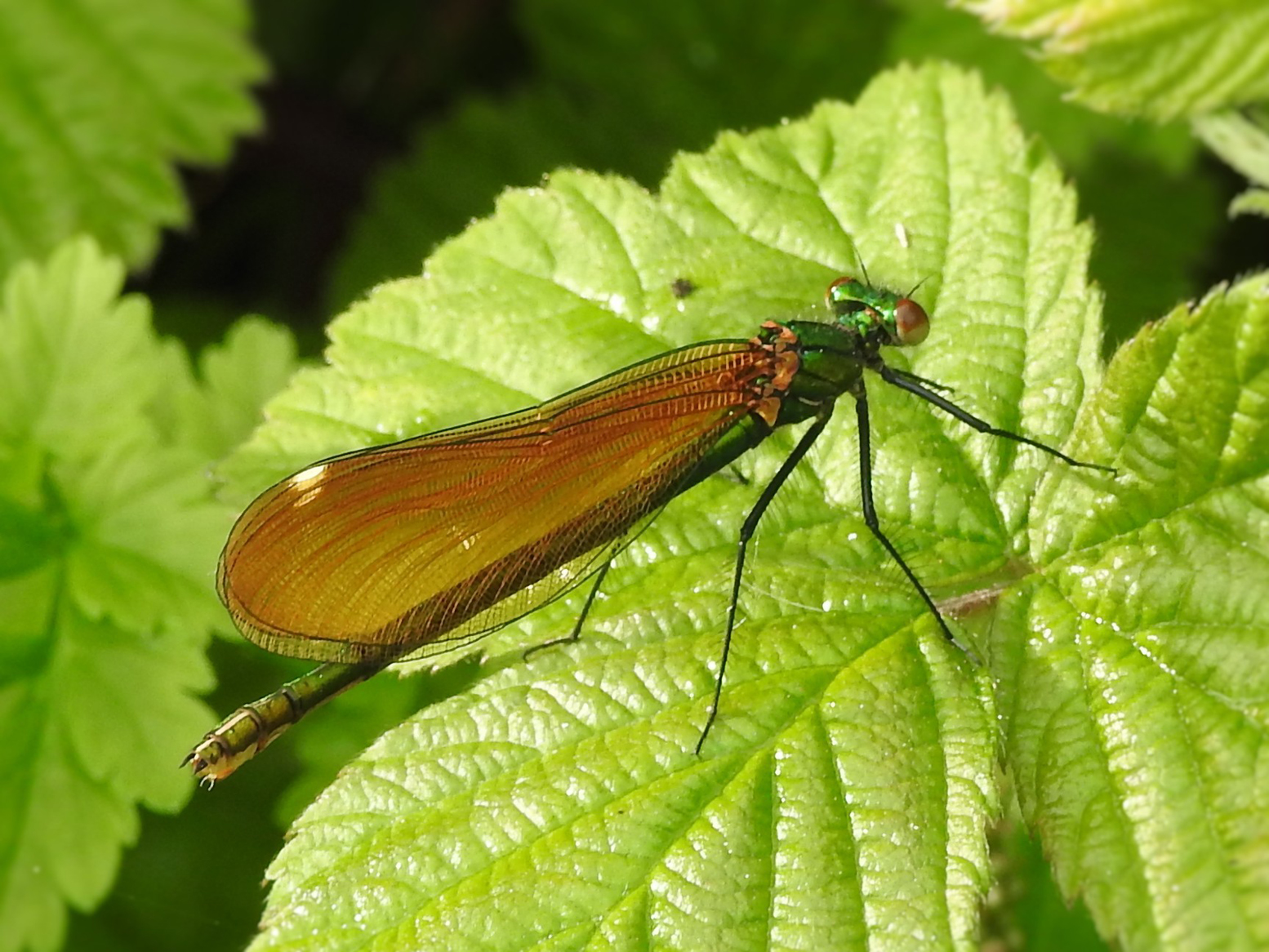
(c) Alan Keatley
Azure Damselfly
Coenagrion puella
Breeds in all ponds on site, and often the commonest species present with
large emergences a feature of early summer
(c) Simon Thurgood
Common Blue Damselfly
Enallagma cyathigerum
Several records in the mid 1990s, but declined and was not recorded for
several years. One on the Dune Ridge on 10 Aug 2008 was presumably a migrant,
but others were recorded in 2009 and 2010. This remains a less than annual
visitor to the Warren.
Small Red-eyed Damselfly
Erythromma
viridulum
First recorded in August 2010 with up to 20 individuals and egglaying
observed at the Main Pond. The species remains on site but usually in low
numbers. Currently one of a handful of Devon sites and was once the most
westerly location in the UK for this rapidly expanding species.
(c) Alan Keatley
Blue-tailed Damselfly
Ischnura elegans
A common species on site, breeding in all ponds.
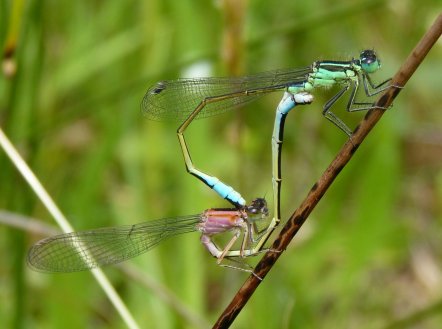
(c) Lee Collins
Large Red Damselfly
Pyrrhosoma nymphula
This widespread species is surprisingly scarce on site with less than annual
records. Has not been reported breeding.
Hairy Dragonfly
Brachytron pratense
This nationally scarce species is the rarest dragonfly found regularly on
the Warren. Recorded annually from the Main Pond in varying numbers, it is
presumed to breed but the occasional absences suggest the population depends
on individuals from larger populations up the estuary.
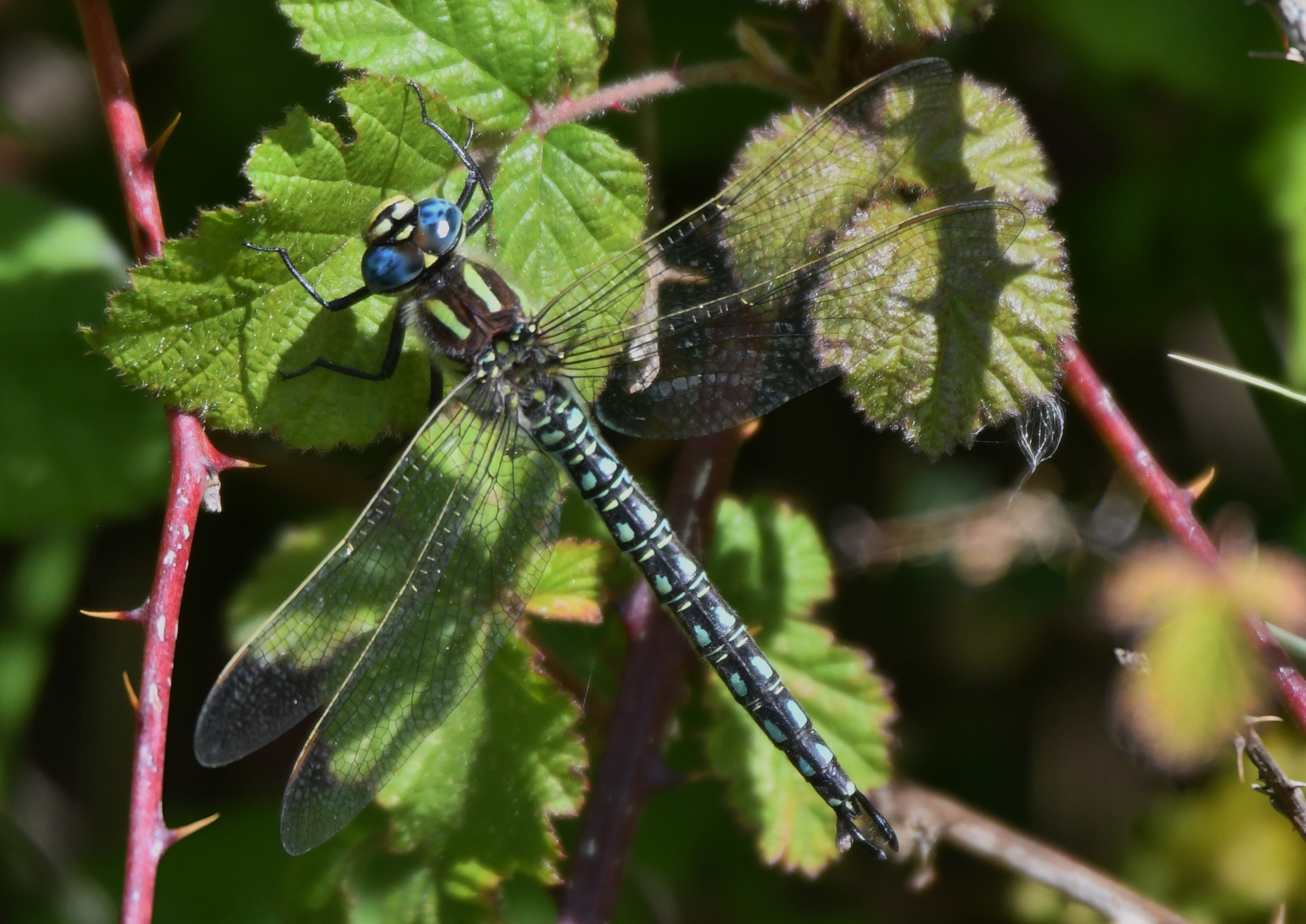
(c) Simon Thurgood
Southern Hawker
Aeshna cyanea
A species that has bred in the past, but has declined, there are still a few
records of this species most years.
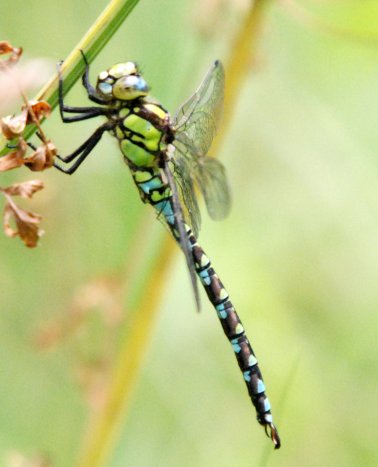
(c) Simon Thurgood
Common Hawker
Aeshna juncea
The scarcest of the three hawkers recorded on site, there have only been a
handful of confirmed sightings and none recently.
Migrant Hawker
Aeshna
mixta
A regular sight along woodland rides in late summer, this species breeds on
site and can occur in large numbers, presumably migrants, if conditions are
suitable. Along with Common Darter, this is often the last species to be
recorded.
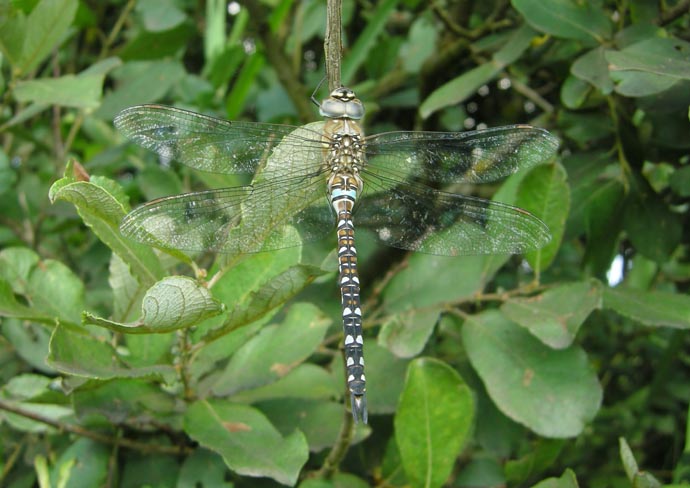
(c) Lee Collins
Vagrant Emperor
Anax ephippiger
The first confirmed record of this African species was on 13 May 2017.
Further records have occurred on 8 Oct 2017, 18 Oct 2018 and 16 Oct 2019.
Probables were seen briefly on 28 April and 16 May 2011, during a record
national influx of the species, and 3 Nov 2019.
Emperor Dragonfly
Anax imperator
This species breeds in all ponds on site, where males can often be seen
holding territory. Individuals can also be encountered foraging along the
Dune Ridge and elsewhere on site.
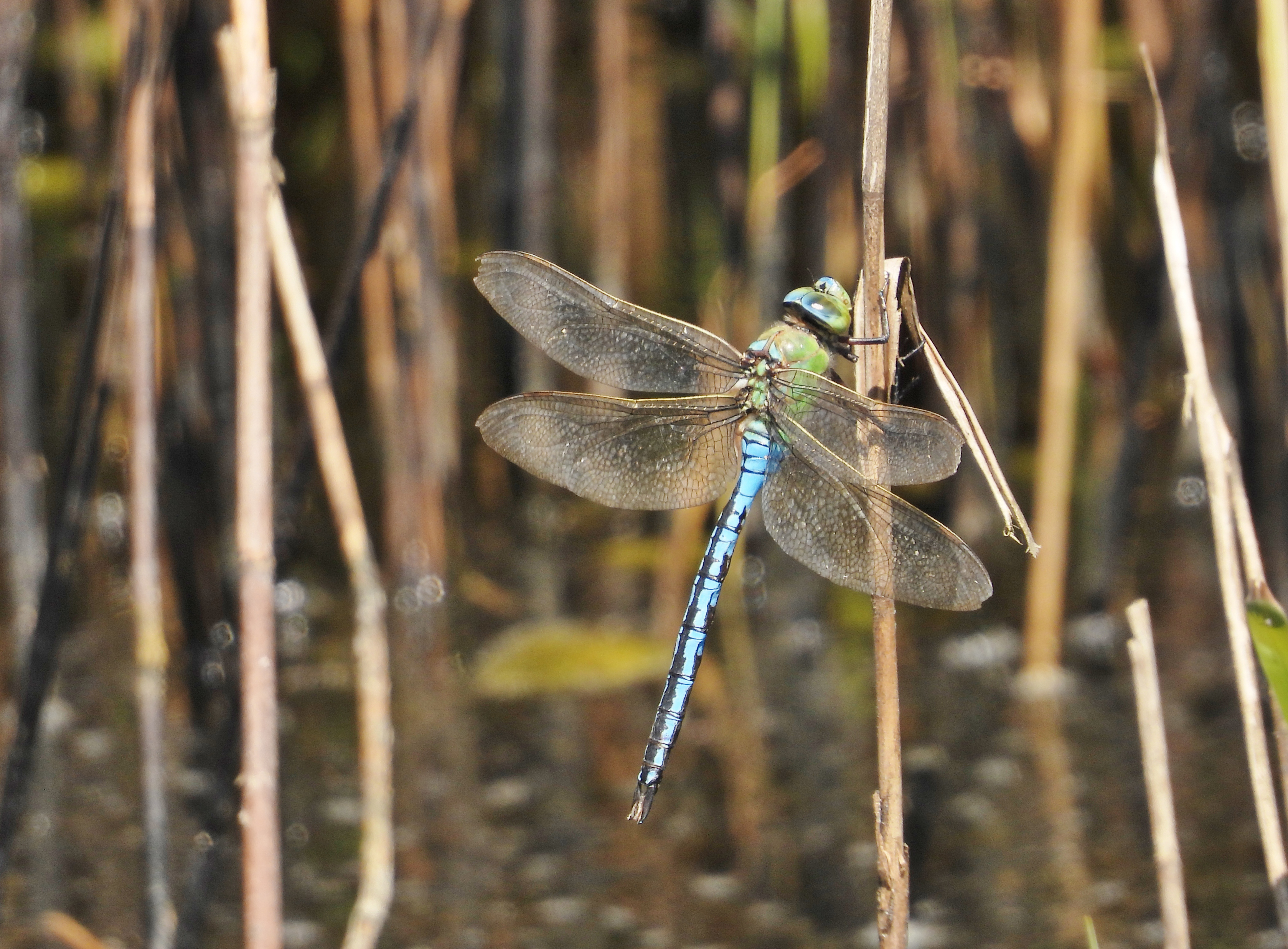
(c) Lee Collins
Lesser Emperor
Anax parthenope
Vagrant.
The first record was a female
near the Main Pond on 3 August 2020.
Golden-ringed
Dragonfly
Cordulegaster boltonii
Previously a vagrant to the recording area with only three records prior to
the mid 1990s, has since been recorded annually in low numbers.
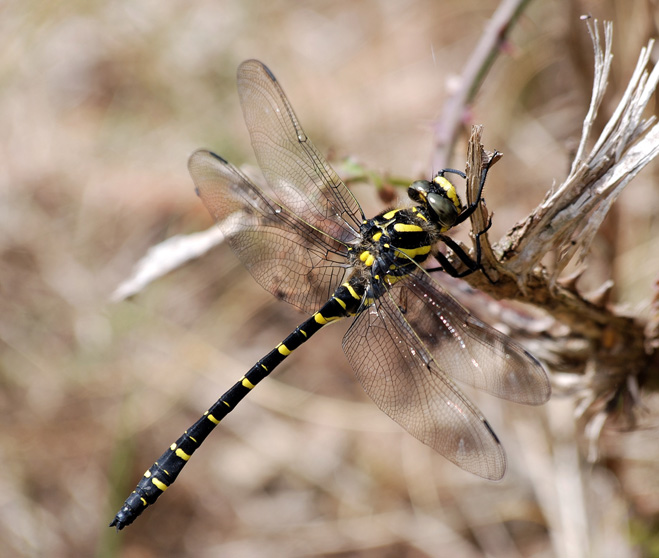
(c) Lee Summersby
Broad-bodied Chaser
Libellula depressa
Usually the first species recorded each year, this species did breed at all
the ponds on site, but now occurs in very low numbers, mostly on the Golf
Course.
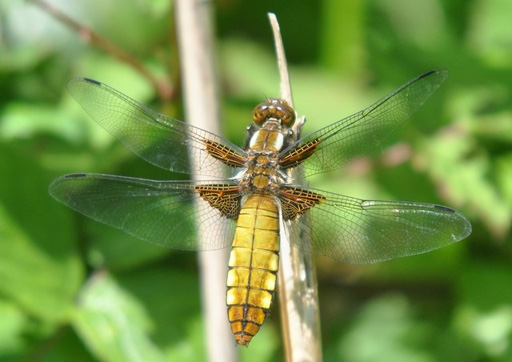
(c) Simon Thurgood
Scarce Chaser
Libellula fulva
With only one record, another vagrant to the Recording Area. A female was in
bushes behind the hide on 19 Jul 2008. The species has become established at
the top end of the estuary so it is perhaps strange there have been no
further sightings.
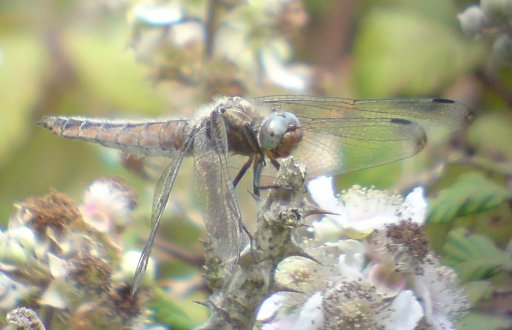
Four-spotted Chaser
Libellula quadrimaculata
This was a regular breeding species after the pond excavation in the 1980s.
It is no longer present and presumably became extinct on site some time in
the 1990s, with no recent records. One in Greenland Lake on 25 May 2008 was
presumably a migrant, but two were seen in 2009. There have been no further
sightings.

Black-tailed Skimmer
Orthetrum cancellatum
Previously a common breeding species, but the favoured habitat of open bare
ground around the ponds is now much reduced. Now no longer recorded
annually.
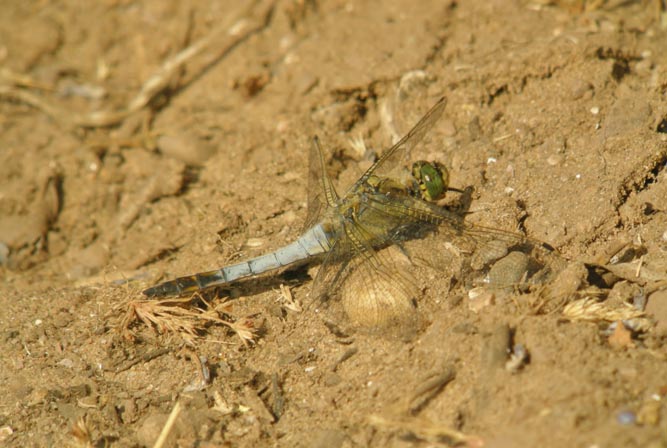
(c) Lee Collins
Keeled Skimmer
Orthetrum coerulescens
A vagrant to the recording area with four records. singles in 1982 & 1983, a single male on
the Dune Ridge on 24 Aug 2004 and a worn female in the same place on
16 Aug 2010.
(c) Lee Collins
Black Darter
Sympetrum danae
A vagrant to the recording area with two records. A single male was seen in
Greenland Lake on 14 Sep 2004 and it or another was on the Dune Ridge on 23
Sep 2004.
Yellow-winged
Darter
Sympetrum flaveolum
A vagrant to the area with only two records, both in the invasion year of
1995.
Red-veined Darter
Sympetrum fonscolombii
A vagrant to the area, which has bred. The first was on 22nd Aug 1984, the
next was a very fresh teneral
male, found drying its wings in Greenland Lake, on the late date of 21st Oct
1995. This had presumably emerged from the Main Pond, it's condition showed
it had not come far, the first breeding record for Devon. Since then there have 12 other records, including two
on Warren Point in June 2009.
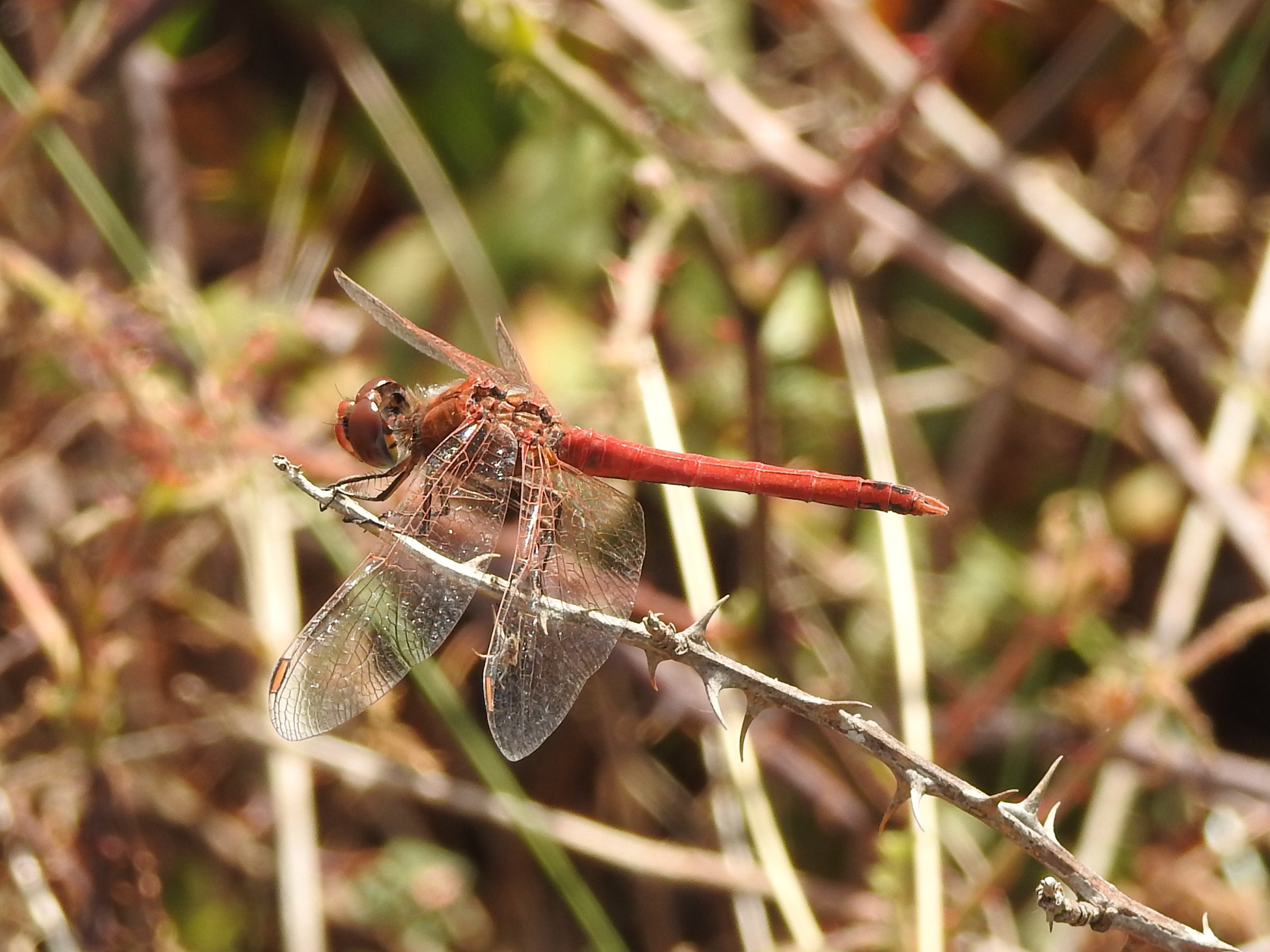
(c) Alan Keatley
Ruddy Darter
Sympetrum sanguineum
First recorded in 1982, this species previously bred at the Dune Pond and possibly elsewhere
(individuals have been recorded from moth traps set around the Main Pond),
its eventual demise as a breeding species coincided with the presence of a
Moorhen brood at the main site! Migrants are still recorded in some years
and it is thought this was the likely source of the breeding population.
Vagrant Darter
Sympetrum vulgatum
An exceptional vagrant to the Recording Area. A female was
seen and photographed by the Dune Pond on 6 Sep 2007. This, the first in
Devon for 60 years and the first in the UK for 10 years, was accepted by the BDS records committee.
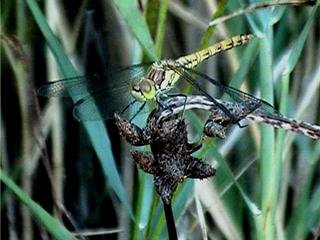
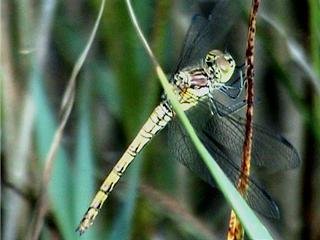
(c) John Fortey
Common Darter
Sympetrum striolatum
The commonest dragonfly in the Recording Area, with records from all ponds
and throughout the site. This is often the latest species to be seen with
records well into November in some years.
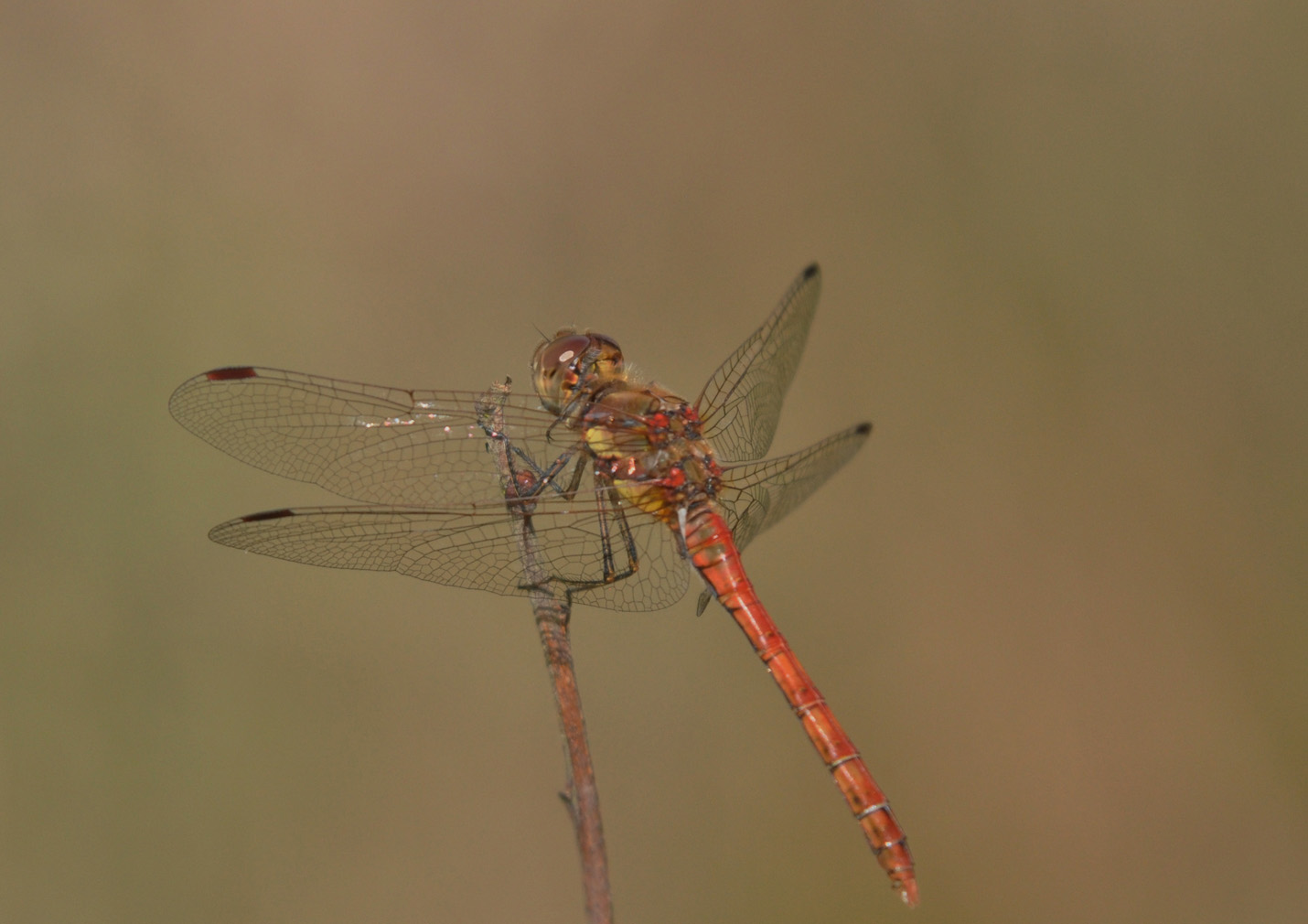
(c) Simon Thurgood